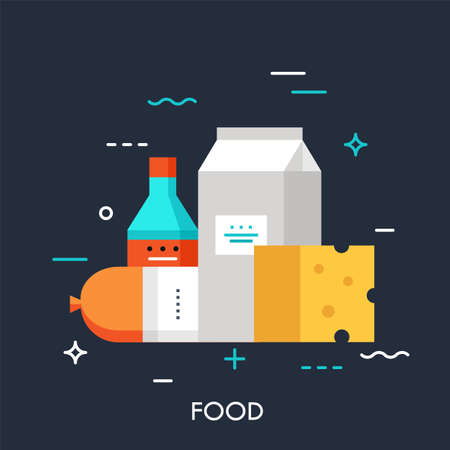1. Understanding the Challenge: The British Countryside and Temperature
There’s a quiet thrill in waking up to the soft patter of rain on canvas, whether you’re pitched above the rugged Cornish cliffs or nestled in a hidden valley of the Lake District. Camping across the UK is an embrace of unpredictable beauty—rolling mists over moorlands, sunlight flickering through ancient oaks, and the ever-present possibility that blue skies may swiftly turn to drizzle. Yet, this atmospheric tapestry weaves in more than poetic scenery; it brings a set of distinct challenges for anyone hoping to keep their food fresh without the luxury of a fridge. Unlike climates where temperature extremes are predictable, Britain’s weather is famously mercurial. A chilly spring morning can be followed by a muggy afternoon, while summer nights may dip low enough to leave you reaching for your woollen jumper. These constant shifts make it tricky to rely on nature alone for cooling your supplies. From salty sea breezes along the Jurassic Coast to bracing upland winds on Scottish lochsides, every camp spot presents its own microclimate. In such conditions, maintaining the right temperature for milk, cheese, or picnic provisions becomes both a science and an art—one that connects us not just with our food, but with the rhythms of this ever-changing land.
2. The Science Behind Keeping Things Cold
Camping in the UK means embracing the capricious British weather, where temperatures can shift from balmy sunshine to brisk drizzle within hours. Understanding the science behind keeping food cold without a fridge is crucial, especially when every degree matters for freshness and safety. At its heart, this challenge comes down to three key concepts: heat transfer, insulation, and evaporative cooling.
The Physics of Heat Transfer
Heat always travels from warmer areas to cooler ones until equilibrium is reached—this is the basic principle of thermodynamics. On a campsite, your butter or milk will gradually absorb warmth from the surrounding air if there’s nothing to slow the process down. In Britain’s unpredictable climate, this can mean rapid warming on an unexpectedly sunny day or slower heating during a cloudy spell. To keep things cold, you must minimise this transfer of heat.
Insulation: Your First Line of Defence
Insulation works by creating barriers that slow down the movement of heat into your food supplies. Materials like foam, wool, or even layers of newspaper are excellent at trapping air and reducing heat flow. Many British campers swear by cool boxes lined with reflective foil or thick blankets when fridges are out of reach. The effectiveness of different insulating materials in various weather conditions can be summarised as follows:
| Insulating Material | Effectiveness in Sun | Effectiveness in Rain | Notes for UK Campsites |
|---|---|---|---|
| Foam Cool Box | High | High | Reliable; resists damp, retains cold well |
| Wool Blanket Wrap | Moderate | Low (if wet) | Works best dry; absorbs moisture easily in rain |
| Reflective Foil Lining | Very High | Moderate | Bounces sunlight; less effective if overcast or damp |
| Newspaper Layers | Moderate | Poor (if wet) | Clever budget option but not ideal in persistent drizzle |
The Magic of Evaporative Cooling
This ancient technique harnesses the natural power of water evaporation to lower temperatures. When water turns to vapour, it takes heat away from its surroundings—a trick used for centuries before refrigeration. Wrapping perishables in a damp cloth and placing them in a breezy spot under shade can offer surprising relief from summer warmth on a UK campsite. However, because British air is often humid, evaporative cooling is more effective on those rare dry, windy days than during muggy spells.
Why Some Methods Outperform Others in the British Climate?
The unpredictability of UK weather means that no single method reigns supreme. Insulation excels during chilly nights and sudden showers but falters if left exposed to sustained rain. Evaporative cooling shines during dry breezes but struggles when the air is already saturated with moisture. By blending these scientific approaches—and paying close attention to local conditions—British campers can keep their provisions fresh and crisp amid the elements.

3. Clever Traditional Methods and Modern British Hacks
There’s a quiet joy in turning to the landscape and heritage for solutions, especially when keeping food cool on a British campsite—far from the hum of a fridge. Over centuries, Britons have developed ingenious ways to harness nature’s chill. The time-worn stone walls dotting the countryside, for instance, are not just relics of rural charm; their thick, dense structure keeps the air inside deliciously cool, making them perfect impromptu larders for perishables. In the dappled shade of ancient trees or nestled against a mossy stone, your provisions find respite from the summer sun.
Another beloved trick is stream cooling—a method as old as the hills. Picture a gentle beck winding through a Lake District valley: Submerging well-sealed containers of milk or butter in its brisk current can keep them fresh all day, the water working as nature’s own refrigerator. Just be sure your packaging is watertight and securely wedged among smooth pebbles to prevent any adventurous cheeses from floating downstream.
Of course, modern British campers bring their own clever twists to these traditions. Coolboxes packed with gel packs or frozen water bottles are a staple—simple yet effective. For an extra layer of resourcefulness, swap in cans of chilled cider or lemonade as makeshift ice blocks; they’ll keep your cheese cold and reward you with a frosty drink at sunset. Layering food strategically—with items most sensitive to heat tucked nearest the coldest packs—maximises every degree of coolness. These little rituals, blending old wisdom with new ingenuity, allow you to savour British landscapes and flavours in tandem—refreshingly unhurried and deliciously cool.
4. Sustainable Solutions: Eco-Friendly Cooling on the Campsite
As British campers seek harmony with nature, keeping food cool becomes not just a practical concern but also an opportunity to tread lightly upon the land. Embracing sustainable solutions means making thoughtful choices—from what we pack to how we preserve it—while honouring the gentle rhythms of the countryside. Fortunately, many eco-friendly options are both effective and rooted in local tradition, allowing us to savour fresh food without sacrificing our green credentials.
Nature’s Own Insulators
The British landscape is rich with resources that can help insulate perishables. Foraging for materials such as bracken, dry grass, or even layers of moss (always harvested responsibly) creates natural buffers against heat. These organic insulators can be used to wrap around containers or line cool boxes, helping to maintain lower temperatures throughout the day. The key lies in layering—mimicking the way woodland floors stay cool beneath their leafy canopies.
Village Shop Essentials
For those who prefer convenience with a local touch, village shops often stock items perfect for makeshift cooling solutions. Consider the humble tea towel: dampened and draped over a basket of fruit or cheese, it exploits evaporative cooling—a gentle nod to old-fashioned wisdom. Beeswax wraps, increasingly popular and made by local artisans, offer breathable yet protective covers for sandwiches and snacks, reducing reliance on plastic while keeping contents fresh.
Eco-Friendly Cooling Methods at a Glance
| Method | Description | Sourcing Tips |
|---|---|---|
| Bracken & Moss Insulation | Line containers with gathered foliage to slow warming | Harvest sustainably from woodland edges; never uproot entire patches |
| Damp Tea Towels | Wrap perishables and keep moist for natural evaporation | Pick up traditional cotton towels at local village shops |
| Beeswax Wraps | Covers food securely while allowing it to breathe | Seek locally made options supporting rural economies |
Savouring Local Flavours Responsibly
By blending age-old British ingenuity with present-day environmental awareness, campers can enjoy cold cheeses from Somerset or Kentish strawberries under canvas—each bite wrapped in care for the land that nourishes us. It’s about more than just preservation; it’s about participating in a cycle of respect and resourcefulness, where every choice echoes a quieter, more beautiful way of living outdoors.
5. The Social Side: Food, Tea, and British Campfire Culture
There’s something uniquely British about gathering outdoors, a steaming cup of tea or a chilled Pimm’s in hand, as the day stretches long and golden over the campsite. Preserving food without a fridge isn’t just science—it’s an art that shapes our social rituals. Picture this: friends clustered around a weathered picnic table, sharing scones with clotted cream kept cool by an ingenious ice pack arrangement, or passing around a thermos filled with crisp, herb-infused Pimm’s, condensation beading on the metal in the summer dusk.
At the heart of these moments lies a gentle choreography of preparation and care. The cheddar you tucked into your cool box on Friday must survive until Sunday’s ploughman’s lunch. Butter softens under canvas but is shielded from the sun by clever insulation—perhaps stashed beneath damp tea towels or nestled among chilled cans in a shaded basket. Each item preserved becomes part of a ritual: slicing cold cucumbers for sandwiches at elevenses, or unveiling perfectly chilled strawberries after a bracing swim in the lake.
British campfire culture is as much about what we share as how we keep it fresh. There’s joy in pooling resources—a communal cheese board assembled from everyone’s contributions, or pots of jam swapped between tents. And always, the kettle sings—brewing rounds of tea as dusk falls, milk kept cool for just one more cuppa. These small acts of preservation connect us, weaving together old traditions with clever solutions born from necessity and camaraderie.
6. When to Let Go: Knowing When Food is No Longer Safe
Even the most careful camper can find themselves facing a tub of suspicious potato salad under the rare but potent British sun. Recognising when to part ways with food isn’t just about waste; it’s about safeguarding your health and the integrity of your adventure. The unique dampness of the British countryside, paired with occasional warm spells, can accelerate spoilage in ways that are subtle yet serious.
Signs Your Food Has Turned
Your senses are your best allies on the campsite. If dairy begins to smell sour or has a curdled texture, if meats have developed a slimy film or off odour, or if fruit looks bruised and emits an alcoholic tang, these are classic signs of spoilage. Mould is never to be ignored; even a small spot can spell trouble, as spores may have spread beyond what’s visible.
Local Food Safety Standards
UK food safety guidelines advise that perishable foods should not be left above 8°C for more than a couple of hours. On British campsites, this means being extra vigilant during those rare sunny afternoons. Use thermometers in cool boxes where possible, and remember that the ‘danger zone’—between 8°C and 63°C—is where bacteria thrive most rapidly. Always err on the side of caution; if in doubt, throw it out.
What To Do If The Sun Gets The Better Of You
If you suspect your provisions have been compromised by heat—whether that’s butter gone soft and leaking through its wrapper or milk that’s taken on an odd hue—don’t take risks. Dispose of questionable items away from your tent area to avoid attracting wildlife. Where possible, opt for tinned or dried alternatives until you can restock at a local village shop or farm stand.
Campsite living is about savouring the moment and respecting nature’s rhythms—including its unpredictability. Trust your instincts, know the signs, and you’ll ensure each meal remains a pleasure rather than a peril as you roam Britain’s wild and wonderful landscapes.

